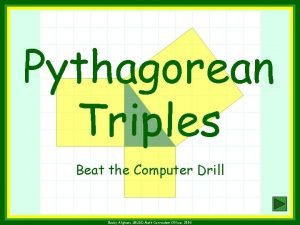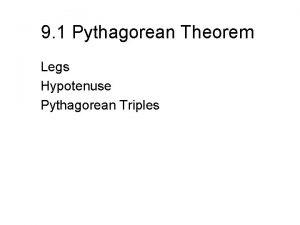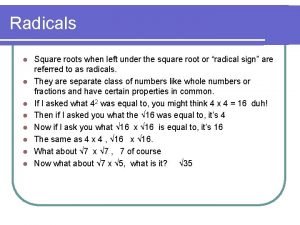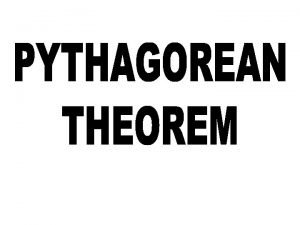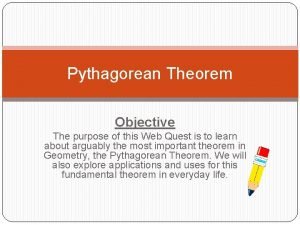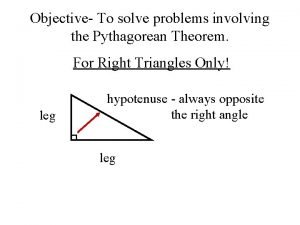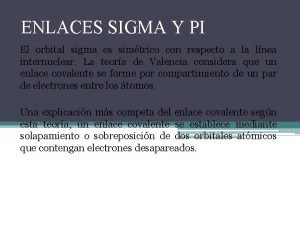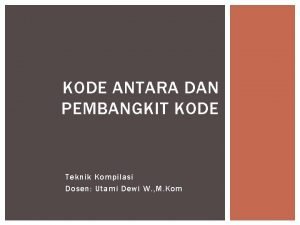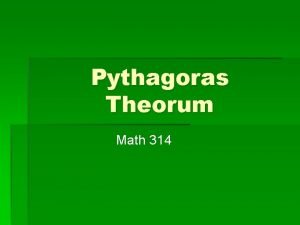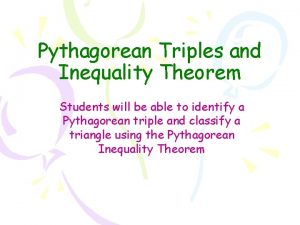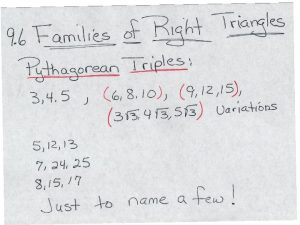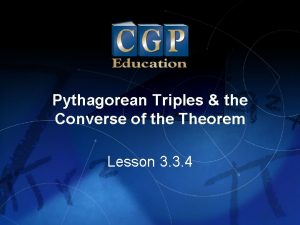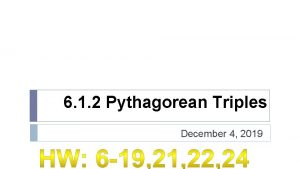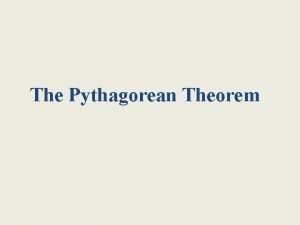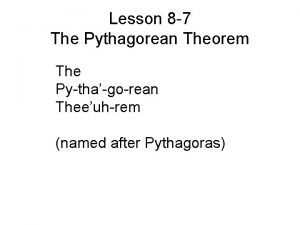Pythagorean Triples 4 Focus 5 Learning Goal 1












- Slides: 12

Pythagorean Triples

4 Focus 5 - Learning Goal #1: Students will understand apply the Pythagorean Theorem. In addition to level 3. 0 and beyond what was taught in class, the student may: Make connection with other concepts in math. Make connection with other content areas. Explain the relationship between the Pythagorean Theorem and the distance formula. 3 2 1 0 The student will understand apply the Pythagorean Theorem. Prove the Pythagorean Theorem and its converse. Apply the Pythagorean Theorem to real world and mathematical situations. Find the distance between 2 points on a coordinate plane using the Pythagorean Theorem. The student will understand the relationship between the areas of the squares of the legs and area of the square of the hypotenuse of a right triangle. Explain the Pythagorean Theorem and its converse. Create a right triangle on a coordinate plane, given 2 points. With help from the teacher, the student has partial success with level 2 and level 3 elements. Plot 3 ordered pairs to make a right triangle Identify the legs and the hypotenuse of a right triangle Find the distance between 2 points on the coordinate grid (horizontal and vertical axis). Even with help, students have no success with the unit content.

Fact In a right triangle, the sides touching the right angle are called legs. The side opposite the right angle is the hypotenuse.

The Pythagorean Theorem, a 2 + b 2 = c 2, relates the sides of RIGHT triangles. a and b are the lengths of the legs and c is the length of the hypotenuse.

A Pythagorean Triple… Is a set of three whole numbers that satisfy the Pythagorean Theorem. • What numbers can you think of that would be a Pythagorean Triple? • Remember, it has to satisfy the equation a 2 + b 2 = c 2.

Pythagorean Triple: The set {3, 4, 5} is a Pythagorean Triple. a 2 + b 2 = c 2 32 + 4 2 = 5 2 9 + 16 = 25

Show that {5, 12, 13} is a Pythagorean triple. Always use the largest value as c in the Pythagorean Theorem. a 2 + b 2 = c 2 52 + 122 = 132 25 + 144 = 169

Show that {2, 2, 5} is not a Pythagorean triple. a 2 + b 2 = c 2 22 + 22 = 52 4 + 4 = 25 8 ≠ 25 Showing that three numbers are a Pythagorean triple proves that the triangle with these side lengths will be a right triangle.

How to find more Pythagorean Triples If we multiply each element of the Pythagorean triple, such as {3, 4, 5} by another integer, like 2, the result is another Pythagorean triple {6, 8, 10}. a 2 + b 2 = c 2 62 + 82 = 102 36 + 64 = 100

By knowing Pythagorean triples, you can quickly solve for a missing side of certain right triangles. Find the length of side b in the right triangle below. Use the Pythagorean triple {5, 12, 13}. The length of side b is 5 units.

Find the length of side a in the right triangle below. It is not obvious which Pythagorean triple these sides represent. Begin by dividing the given sides by their GCF (greatest common factor) { ___, 16, 20} ÷ 4 { ___, 4, 5} We see this is a {3, 4, 5} Pythagorean triple. Since we divided by 4, we must now do the opposite and multiple by 4. {3, 4, 5} • 4 = {12, 16, 20} Side a is 12 units long.

 How to memorize pythagorean triples
How to memorize pythagorean triples Pythagorean triples quiz
Pythagorean triples quiz Pythagorean triples square roots
Pythagorean triples square roots 33 56 65 üçgeni
33 56 65 üçgeni What is a pythagorean triple
What is a pythagorean triple Solve the problem
Solve the problem For adult
For adult Porter's competitive strategies
Porter's competitive strategies Cost leadership and differentiation
Cost leadership and differentiation Actor focus vs object focus
Actor focus vs object focus Enlace covalente sigma
Enlace covalente sigma Triples of latin letters
Triples of latin letters Notasi postfix teknik kompilasi
Notasi postfix teknik kompilasi
